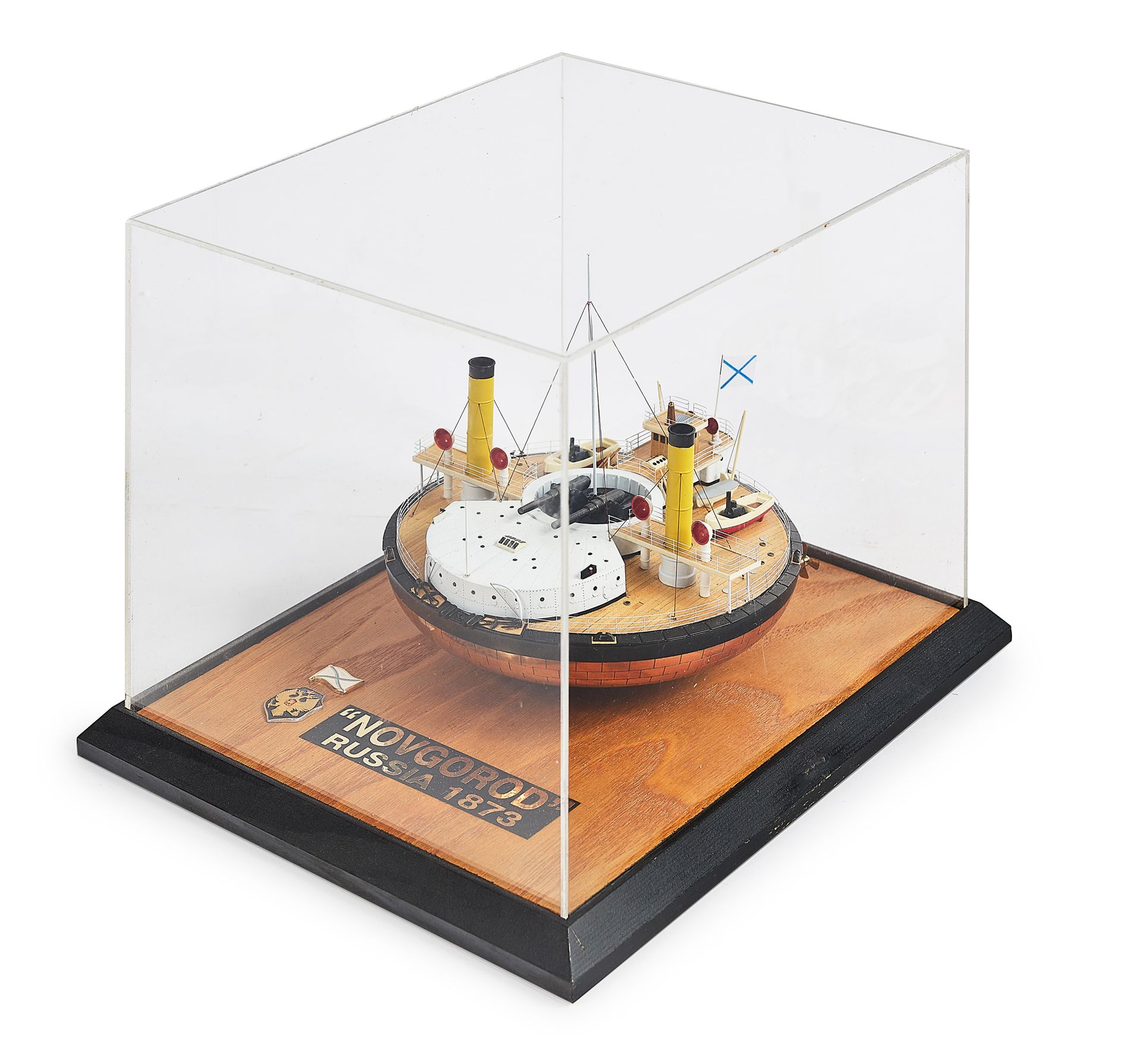Description
Miniature of the Imperial Russian Navy warship "Novgorod", circular hull with copper-plated bottom and fitted with six brass propellers, black-painted rudder, basswood veneered decks, cockpits, ventilators, funnels and other details. Rouf with rounded front is fitted with a pair of cannons, wooden bases and wood and acrylic case. 20th century Size of display case: H. 18 cm W. 22 cm D. 17 cm The Novgorod was a warship of the Imperial Russian Navy. She was one of the most unusual warships ever built and still survives in popular naval myth, often described as the "ugliest warship ever built". Together with the flagship "Popov", they were affectionately known as "popovkas", after their chief designer Andrei Alexandrovich Popovovich Popov. The circular hull, intended as a stable platform for the cannons, proved almost unmanageable in practice.
242
Miniature of the Imperial Russian Navy warship "Novgorod", circular hull with copper-plated bottom and fitted with six brass propellers, black-painted rudder, basswood veneered decks, cockpits, ventilators, funnels and other details. Rouf with rounded front is fitted with a pair of cannons, wooden bases and wood and acrylic case. 20th century Size of display case: H. 18 cm W. 22 cm D. 17 cm The Novgorod was a warship of the Imperial Russian Navy. She was one of the most unusual warships ever built and still survives in popular naval myth, often described as the "ugliest warship ever built". Together with the flagship "Popov", they were affectionately known as "popovkas", after their chief designer Andrei Alexandrovich Popovovich Popov. The circular hull, intended as a stable platform for the cannons, proved almost unmanageable in practice.
You may also like
